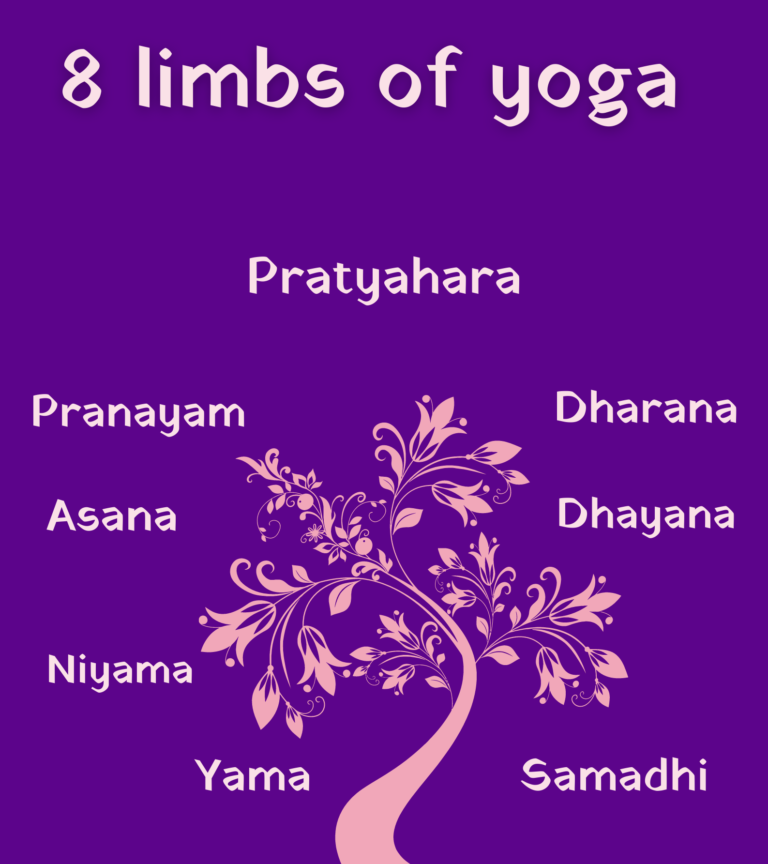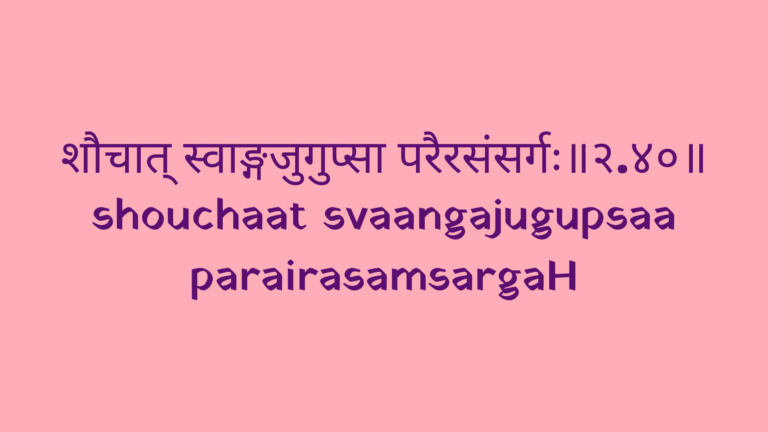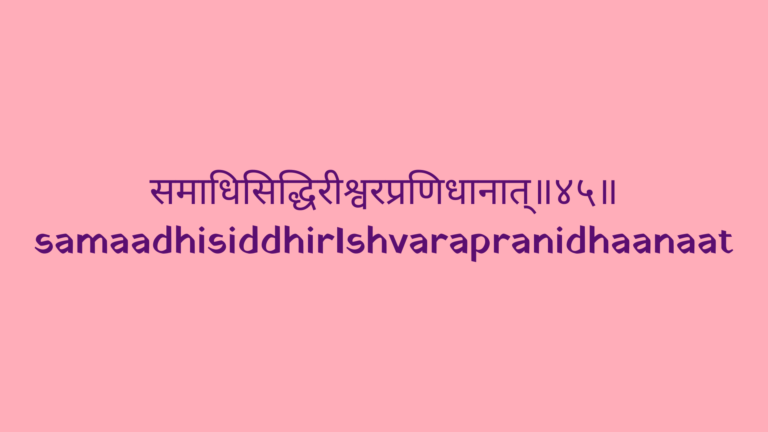Learn Yoga Philosophy
ASHTANGA YOGA
In the Yoga Sutras, Patanjali has outlined an eightfold path of the practice, called Ashtanga Yoga or the ‘Eight Limbs of Yoga’.
The 8 limbs of Ashtanga Yoga are:
- Yamas – Ethical observances to live by
- Niyamas – Observances of self-discipline
- Asana – postures in Yoga
- Pranayama – breathing exercises to control the flow of prana or life force
- Pratyahara – Withdrawal of the senses
- Dharana – Single pointed concentration
- Dhyana – Meditation or contemplation
- Samadhi – Liberation or blissful union with the Divine
Last time, we learned about the five Yamas.
We shall now dwell into the five components of Niyamas.


Niyamas are positive observances, guidelines and ethical codes of yoga to be applied for the alignment of the yogi’s mind, body and spirit to progress on his spiritual journey.
Saucha
Saucha means purity, cleanliness and sacredness of our body and mind.

Through cleanliness and purity of body and mind, the mind naturally begins toward the divine, and away from the external, physical world.
Saucha is acquired through practice of asanas -the movements ensures proper circulation and prevents accumulation of toxins in the body ; through pranayama – the breathing techniques help purify and proper emptying of lungs , helps to draw in energy and release and move out stagnant energy ; through meditation – the different techniques help quieten and calm the mind , empty non essential , negative thoughts ; clearing of the soul –by off loading anything we gather or hold on to like past hurts or injustices releasing anger, hate, greed, fear and pride ; good clean food helps also keep the mind and body clean. saucha helps to clear the clutter inside to create space inside to get clarity and align with the supreme.
Through the practice of yoga we get into a habit of internal cleanliness, like we have a daily habit of cleaning our bodies just by bathing. It invites us to observe our thoughts as a habit and get into the habit of being pure.
Saucha invites us to create purity of environment or space around us ,ensuring that it is free of clutter, hoarding and that it is simple and not complicated and to replicate the same within.
Santosha
Santosha means contentment. It is the opposite of desire and of the feeling of lack of. We depend on everyone and everything around us to get better or improve to give us happiness. We complain about what is not there. It is instead the ability to find contentment in any situation or circumstance. It is the experience of unconditional happiness.

From contentment, supreme happiness is gained.
Santosha invites us to accept and embrace what our circumstances are, not passively but be joyous, grateful and content with what we have been provided, to welcome and accept our true selves – that which is an unlimited source of joy.
In our journey with yoga we realize the importance of not focusing on striving or on achieving the various poses or places or things in life but to connect deeply to ourselves – a reservoir of energy and contentment.
Tapas
Tapas means austerity or discipline Tapa means to burn, referring to a burning passion of discipline. Again this is not solemn or serious but is an eager, excited discipline.

The result of austerity is bringing special powers to the organs and the body,
by destroying the impurity.
The fire, the agni that burns in our belly – helps give us the motivation to follow anything, to help change, it is also required for digestion of food. This fire must not be out of control burning everything including the self in its path. So we learn to initially light up the fire by first understanding the body and the sense organs and the fluctuations of the mind it causes – the vrittis – and master them and then fan the fire so that it is strong but controlled and an aligned practice.
Tapas calls us to discipline through Seva (service) and Sadhana (self practice of asanas) (externally) and then going within watching each emotion filtering the flickering caused by the senses and burn away what is not required, we learn to steadily focus on that which is within. We learn to discover our unlimited selves.
Svadhyaya
Svadhyaya means self study, inquiry and awareness. We ask the question and investigate = who am I? Not the external labels. We also observe our own thoughts and corresponding behaviour. We then glean that which is our true nature.

From study and by repetition of the mantras comes communion with one’s chosen deity.
We seek outside for answers, Swadhya invites us to be centered and non reactive to the dualities. As we realize what we are not, we draw closer to who we are.
While practicing on our mat we start going within. We start feeling, with complete engagement and awareness, each of our movements. Our muscles begin to work, we are aware of our heart beating and we pay attention to the quality of our breath.
In mantra recitation and meditation, we eventually go deeper connecting to the soul and its connection to the supreme soul. We uncover our true divinity. That we are light, love and truth.
Ishvara Pranidhana
From Sanskrit, Ishvara means “God ” or “Supreme Soul,” and pranidhana means “surrender” or “devote.”
Ishvara pranidhana is the practice of fully surrendering the self to God or Supreme source of life. When one gives up the ego to the Supreme Being in humbleness, we permit the submergence into the divine and imbibe the qualities. In Patanjali’s Yoga Sutras, it means committing one’s life and one’s yoga practice to the Lord (or spiritual focus of choice).

By sacrificing all to God, samadhi is attained.
Ishvara Pranidhana invites us towards not only submitting of the Ego, but to let go and stop trying to control things that are beyond the scope of our abilities. It is asking us to experience the letting go of fear and attachments.
As we practice yoga, during each asana, each breath we learn to let go and let the cosmos work through us. It is the letting go of our separateness to welcome our brilliant true nature of the supreme God to shine through – the attainment of Samadhi.

